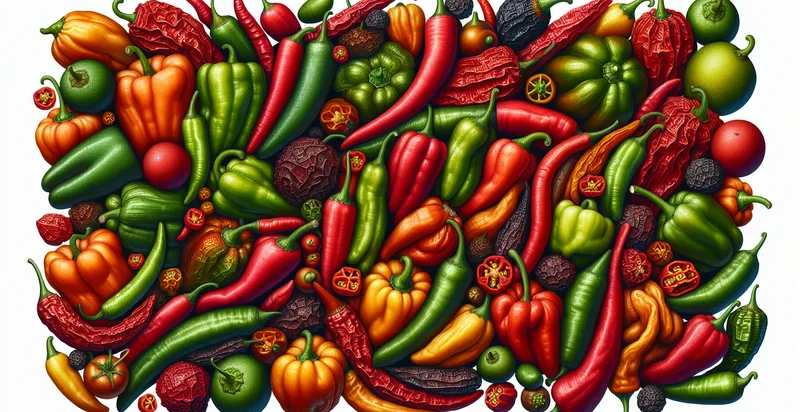Identify pepper type
using AI
Below is a free classifier to identify pepper type. Just upload your image, and our AI will predict what type of pepper it is - in just seconds.

Contact us for API access
Or, use Nyckel to build highly-accurate custom classifiers in just minutes. No PhD required.
Get started
import nyckel
credentials = nyckel.Credentials("YOUR_CLIENT_ID", "YOUR_CLIENT_SECRET")
nyckel.invoke("pepper-type", "your_image_url", credentials)
fetch('https://www.nyckel.com/v1/functions/pepper-type/invoke', {
method: 'POST',
headers: {
'Authorization': 'Bearer ' + 'YOUR_BEARER_TOKEN',
'Content-Type': 'application/json',
},
body: JSON.stringify(
{"data": "your_image_url"}
)
})
.then(response => response.json())
.then(data => console.log(data));
curl -X POST \
-H "Content-Type: application/json" \
-H "Authorization: Bearer YOUR_BEARER_TOKEN" \
-d '{"data": "your_image_url"}' \
https://www.nyckel.com/v1/functions/pepper-type/invoke
How this classifier works
To start, upload your image. Our AI tool will then predict what type of pepper it is.
This pretrained image model uses a Nyckel-created dataset and has 25 labels, including Aji Amarillo, Anchorage Pepper, Banana Pepper, Bell Pepper, Cascabel, Cayenne, Chipotle, Cubanelle, Fresno and Ghost Pepper.
We'll also show a confidence score (the higher the number, the more confident the AI model is around what type of pepper it is).
Whether you're just curious or building pepper type detection into your application, we hope our classifier proves helpful.
Related Classifiers
Need to identify pepper type at scale?
Get API or Zapier access to this classifier for free. It's perfect for:
- Quality Control in Agriculture: This function can be utilized by agricultural producers to automatically classify different types of peppers during the quality control process. By quickly identifying whether the peppers meet the required standards, farmers can reduce waste and ensure consistent product quality.
- Supply Chain Management: Distributors can use this image classification function to verify the types of peppers they are receiving from suppliers. This helps in preventing mix-ups and ensuring that the correct varieties are in stock for retailers, thereby enhancing supply chain efficiency.
- Market Analysis for Retail: Supermarkets can deploy this technology to analyze customer preferences by classifying the types of peppers sold in their stores. Insights gained can help retailers stock popular pepper varieties, improving sales and customer satisfaction.
- Automated Inventory Tracking: Food processing companies can integrate the image classification function into their inventory management systems. By automatically identifying pepper types in inventory, they can streamline restocking processes and reduce human error.
- Recipe Development: Chefs and culinary professionals can use this technology to classify pepper types while developing new recipes. Understanding the flavor profiles of different peppers will enable better ingredient selection and enhance dish innovation.
- Consumer Education Apps: Developers of culinary apps can incorporate this function to help users learn about various pepper types visually. With a reliable identification tool, consumers can make informed choices in cooking and understand the nuances of different pepper flavors.
- Pest and Disease Diagnosis: Agricultural researchers can leverage this image classification capability to monitor pepper plants for pest and disease impact. By identifying affected plants quickly, interventions can be applied faster, thereby reducing crop damage and improving yield.


